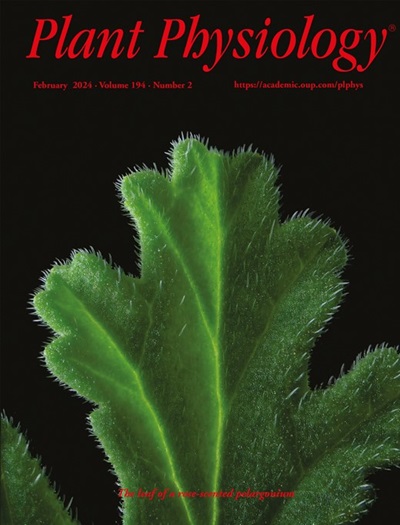Examining photosynthetic induction variation among historical cotton cultivars through time-integrated limitation analyses
IF 6.5
1区 生物学
Q1 PLANT SCIENCES
引用次数: 0
Abstract
A thorough understanding of the biochemical, stomatal, and mesophyll components that limit photosynthetic induction is crucial for targeted improvement of crop productivity. However, compared with biochemical activation and stomatal conductance (gs), mesophyll conductance (gm) remains underexplored in induction studies. The fluorescence method (the variable J method) is a valid and widely accessible tool for gm measurement under steady-state conditions. Here, we experimentally validated the applicability of the fluorescence method under non-steady-state conditions, demonstrating comparable induction kinetics of gm with the well-established carbon isotope method. Building on this validation, we combined the fluorescence method with gas exchange measurements to comprehensively examine the induction kinetics of photosynthetic rate (A) and its associated components in a set of historical cotton (Gossypium hirsutum L.) cultivars. Our results showed no significant effect of the year of cultivar release on A during induction, suggesting that dynamic photosynthesis has not benefited from past selection efforts in cotton. Nonetheless, significant among-cultivar variations were observed in all measured induction traits, hinting at breeding opportunities for leveraging dynamic photosynthetic variation to boost crop productivity. Through induction-period-integrated limitation analysis, we further identified gs as the single most important limiter of photosynthetic induction across all cotton cultivars. Moreover, the analysis also demonstrated that accurately accounting for gm kinetics is essential for the unbiased acquisition of mechanistic insights into non-steady-state photosynthetic physiology. We recommend that future induction studies incorporate gm measurements whenever possible to strengthen the knowledge base necessary for genetically enhancing dynamic carbon gain and crop yield in the field.利用时间积分限制分析研究历史棉花品种间光合诱导变异
深入了解限制光合作用诱导的生化、气孔和叶肉成分对于有针对性地提高作物生产力至关重要。然而,与生物化学激活和气孔导度(gs)相比,叶肉导度(gm)在诱导研究中仍未得到充分的研究。荧光法(变量J法)是一种在稳态条件下测量gm的有效且广泛使用的工具。在这里,我们通过实验验证了荧光方法在非稳态条件下的适用性,证明了与成熟的碳同位素方法相当的gm诱导动力学。在此基础上,我们将荧光法与气体交换测量相结合,对一组历史棉花品种的光合速率(A)及其相关成分的诱导动力学进行了全面研究。我们的研究结果表明,在诱导过程中,品种释放年份对A的影响不显著,这表明棉花的动态光合作用并未受益于过去的选择努力。尽管如此,在所有测量的诱导性状中都观察到显著的品种差异,这暗示着利用动态光合变异来提高作物生产力的育种机会。通过诱导期综合限制分析,我们进一步确定gs是所有棉花品种光合诱导的唯一最重要限制因子。此外,分析还表明,准确地计算转基因动力学对于不偏不倚地获得非稳态光合生理的机制见解至关重要。我们建议未来的诱导研究尽可能纳入转基因测量,以加强通过基因提高田间动态碳增益和作物产量所需的知识基础。
本文章由计算机程序翻译,如有差异,请以英文原文为准。
求助全文
约1分钟内获得全文
求助全文
来源期刊

Plant Physiology
生物-植物科学
CiteScore
12.20
自引率
5.40%
发文量
535
审稿时长
2.3 months
期刊介绍:
Plant Physiology® is a distinguished and highly respected journal with a rich history dating back to its establishment in 1926. It stands as a leading international publication in the field of plant biology, covering a comprehensive range of topics from the molecular and structural aspects of plant life to systems biology and ecophysiology. Recognized as the most highly cited journal in plant sciences, Plant Physiology® is a testament to its commitment to excellence and the dissemination of groundbreaking research.
As the official publication of the American Society of Plant Biologists, Plant Physiology® upholds rigorous peer-review standards, ensuring that the scientific community receives the highest quality research. The journal releases 12 issues annually, providing a steady stream of new findings and insights to its readership.
 求助内容:
求助内容: 应助结果提醒方式:
应助结果提醒方式:


